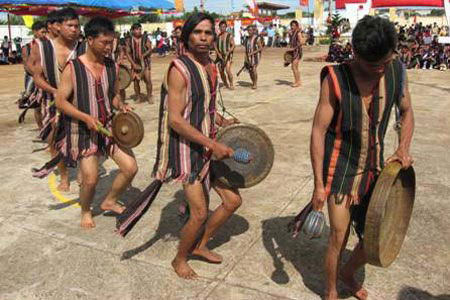Name of ethnic group: Gia Rai (Gio Rai, To Buan, Hobau, Hdrung and Chor).
Population: 317,557 people (Year 1999).
Locality: Concentrated in Gia Lai Province, parts of Kon Tum Province and northern Dak Lak Province.

Customs and habits
The Gia Rai believe in the existence of Giang (Genies) and hold many rituals connected to their genies. They live in separate villages called ploi or bon. Houses are built on stilts. The village chief and the elders have great prestige in Gia Rai society and play a role in running collective activities. Each village has a communal house called a Rong. A matriarchal system has been adopted. Women are free to choose their lovers and decide who they marry. The husband lives with his wife's family and has no rights to inheritance. The daughter, after marriage, no longer lives with her parents and inherits from them. The children take the family name of the mother.
Culture
Gia Rai language belongs to the Malayo-Polynesian Group. Long epics and old tales such as "Dam Di Di San" (Dam Di Goes Hunting) and "Xinh Nha" are very popular in Gia Rai society. Musical instruments include gongs, T'rung, To-Nung, and Krong-Put.
Costumes
The Gia Rai garments resemble Tay Nguyen's garments.
Economy
The Gia Rai live on slash-and-burn cultivation and terraced fields. Rice is their staple food. They also breed elephants. The men are very skillful in basketry, and the women in cloth weaving. Hunting, gathering, and fishing are other sideline occupations.